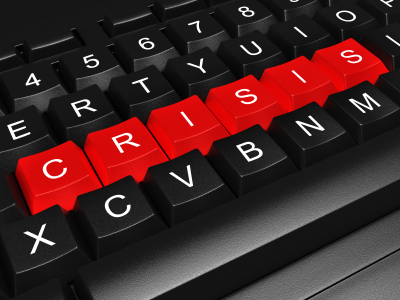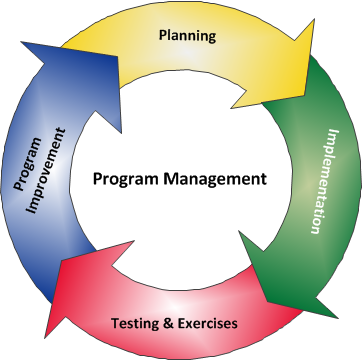
Now — more than ever — it is critically important to invest in a preparedness program.
We Want to Help
Let us help you save money by developing a preparedness program built on a foundation of management leadership, commitment and financial support. It is critical to build a program, maintain resources, keep the program updated, and continuously test it through drills and exercises. Blackhawk EMG will improve your organization's response to any emergency or crisis situation.
Unique Business Challenges
How much time and effort your organization invests in a preparedness program depends on many factors. Regulations establish minimum requirements, and beyond these minimums, each business needs to determine how much risk it can tolerate. Many risks cannot be insured, so a preparedness program may be the only means of managing those risks. Some risks can be reduced by investing in loss prevention programs, protection systems and equipment. It is imperative that you understand the likelihood and severity of risk, and the costs associated with reducing it.
Did you know... ?
- Up to 40% of businesses affected by a natural or human-caused disaster never reopen. (Source: Insurance Information Institute)
- An Ad Council survey reports that nearly two-thirds (62%) of respondents said they do not have an emergency plan in place for their business. Customers expect delivery of products or services on time. If there is a significant delay, customers may go to a competitor.
- Insurance is only a partial solution. It does not cover all losses, and does not replace customers.
Your Preparedness Policy
A preparedness policy that is consistent with the mission and vision of the business should be written and disseminated by management. The policy should define roles and responsibilities. It should authorize selected employees to develop the program and keep it current. The policy should also define the program's goals and objectives.
Goals of a Preparedness Program:
- Protect the safety of employees, visitors, contractors and others at risk from hazards at the facility
- Plan for persons with disabilities and functional needs
- Maintain customer service by minimizing interruptions or disruptions of business operations
- Protect facilities, physical assets and electronic information
- Prevent environmental contamination
- Protect the organization’s brand, image and reputation

Our Products and Services:
- Assess your current preparedness program
- Validate business continuity planning
- Review crisis and emergency risk communication
- Emergency Operations Center development
- We support both private sector corporations and small businesses
- Personal and family safety and preparedness
- And more
Plan Validation and Exercises
It is critical to conduct testing and exercises to evaluate the effectiveness of your preparedness program, make sure employees know what to do, and discover — and fill in — missing elements. There are many benefits to testing and exercises:
- Train personnel; clarify roles and responsibilities
- Reinforce knowledge of procedures, facilities, systems and equipment
- Improve individual performance and organizational coordination and communications
- Evaluate policies, plans and procedures, and evaluate the knowledge and skills of team members
- Reveal weaknesses and resource gaps
- Comply with local laws, codes and regulations
- Gain recognition for the emergency management and business continuity program
An Untested Plan is No Plan At All
Testing will determine if your preparedness plan works. Consider this scenario: Disaster strikes your company. Your preparedness plan calls for you and your staff to relocate to another facility where you need to start up equipment necessary to begin recovering from the disaster. Can equipment at the alternate facility be properly configured, and in time? Are employees able to hear the emergency alarms so everyone can get out safely? Were first responders adequately called to the scene? It is crucial that your preparedness plan be tested and proven fully functional.
Exercises
Several different exercises can help evaluate your program and its ability to protect your employees, facilities, business operations, and the environment. How much time and effort your organization invests in a preparedness program depends upon many factors. Regulations establish minimum requirements, and beyond these minimums, each business needs to determine how much risk it can tolerate. Many risks cannot be insured, so a preparedness program may be the only means of managing those risks. Some risks can be reduced by investing in loss prevention programs, protection systems and equipment. This calls for an understanding of the likelihood and severity of risk, and the costs to reduce it. Contact us — we can help.





